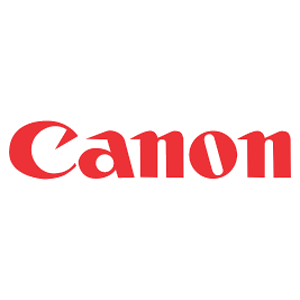
credit Image: Courtesy of Seagate
Gadgets aren’t immaculately conceived, in spite of what seems like lightning-speed development. That new gizmo you’ll love (or hate) for a few months before discarding received countless hours of attention and forethought from a sizable team of designers, engineers and researchers. Long before most products hit the retail shelf, a company’s design team or an outside design consultancy spends maybe a year on them, usually in complete secrecy. Wired News peeks into product design with http://archive.wired.com/gadgets/miscellaneous/multimedia/2007/11/ http://www.frogdesign.com/ Frog Design, a Palo Alto, California, consultancy responsible for such hits as Sony’s first Trinitron and the case for the portable Apple IIc. The first six slides take you from the discovery phases to the final working prototype. The final five look at the machines and material used in the process.Left: Design consultancies start with a series of "contextual inquiries" to see what’s going on in the target consumer’s work or home environment. The Seagate FreeAgent hard-drive maker wanted Frog to spice up the look of its external-storage devices so the company could reposition its brand within the broader field of "consumer electronics." Frog interviewed consumers, and researchers took notes, snapped photos and shot video. That information was then synthesized into numerous product ideas.
credit Image: Courtesy of Seagate
Conceptual Rendering =
description Frog found during the design discovery phase that external-hard-drive owners wanted the ability to purchase drives with the precise connectivity they required for home setup. Thus, the Smart Module was born. Howard Nuk, associate creative director at Frog explains that the Smart Module for the FreeAgent Pro Desktop is user-removable and gives anyone the flexibility to upgrade to a new or different type of connectivity – for example, from USB-only to USB-plus-FireWire. Nuk says the Frog-Seagate team brainstorms new approaches during the design phase, distilling a wide range of initial concepts into a single, actionable idea. 
credit Image: Courtesy of Seagate
Model-Making Time =
description Any designer will tell you that model making is an essential part of the refinement process. Some design shops even hire Hollywood model makers for this portion of the design phase. You can http://archive.wired.com/techbiz/it/news/2007/11/cad_anniversary render anything in CAD these days, says Nuk, but it often takes holding something in your hand or seeing its true dimensions to get a sense of whether you’re on track or not. Once the product concept has been chosen and designed, Frog creates actual-size models that help the designers and clients get a feel for the proportions of the product. Most models are made of out a high-quality Styrofoam, although some are actually produced using http://archive.wired.com/gadgets/miscellaneous/news/2007/11/3d_printers SLS rapid-prototyping machines (basically 3-D printers). Based on these models, the design is once again tweaked on a detailed level and further scrutinized for inconsistencies of fit, finish, color or surfacing. 
credit Image: Courtesy of Seagate
Mechanical Engineering =
description Once a final design is agreed upon by all parties, Frog taps its mechanical-engineering team to create exterior surfaces in a CAD program, such as Pro Engineer. These surfaces are the result of what Frog refers to as the "design intent" that is generally provided by the industrial designers. In reality, the assigned engineers and the industrial designers work together throughout the course of the design process. The engineers are there to keep tabs on (and regulate) the costs of the product’s materials, as well as the manufacturability of a given product. Nuk says this collaboration is key to not only designing a compelling product, but also shipping it within the target schedule and cost parameters. 
credit Image: Courtesy of Seagate
Tweaking the Design =
description Frog spent weeks in Asia with the Seagate team to review and approve the final color, material and finish, or CMF, specifications for the FreeAgent piece parts. This is also a crucial part of the process, and a designer’s deep involvement is usually seen as key to keeping the original design intent intact. If not, manufacturers can easily diverge from the intended design direction, usually by substituting cost-reducing materials or finishes into the manufacturing process, says Nuk. 
credit Image: Courtesy of Seagate
Glamour Shots =
description After collaborating with Seagate throughout the research and design process, it’s time for the FreeAgent’s PR glamour shots and final shipping. At this point, Frog delivers all the project details – which have been copiously documented – to Seagate for implementation and mass production. Some clients (but not Seagate) require nondisclosure agreements so stringent that they prevent consultancies like Frog from even acknowledging involvement in a project or design. 
credit Photo: Jonathan Snyder
Milling Machine =
description Frog Design’s model shop in San Jose appears to be little different from any other industrial machining shop, but it’s used regularly to create sleek working prototypes of plasma televisions and other high-tech gadgetry. Frog model-maker Brad Niven uses a Haas VF-2 CNC (computer numerical control) milling machine to fill a cavity (left by the first round of machining) with hot glue. This is prep for yet another round of machining on a set of prototype aluminum hinges. Haas CNC machines start at $150,000, and that price can double, depending on size preferences. 
credit Photo: Jonathan Snyder
Cooling Off =
description Hass CNC milling machines run hot – so hot that the VF-2 uses a specialized coolant spray as it slices through various polycarbonate parts at high speed. Rolf Milesi, director of Frog’s model shop, explains that this coolant provides a better finish on the pieces by lubricating the materials being cut and keeping the cutting tools from overheating. 
credit Photo: Jonathan Snyder
Cut to Size =
description Marcus Alameda, another Frog model maker, uses the German-made Koelle table saw. Alameda is preparing material needed for CNC milling. The area in the background is used for assembling 1:1 scale models. 
credit Photo: Jonathan Snyder
ABS of … Plastic? Known for its toughness, acrylonitrile butadiene styrene – also known as ABS – is one of the most common plastics used in the prototyping process. In this photo, one of the parts is drying before it gets a final gloss-coat application in the model shop’s paint booth.
credit Photo: Jonathan Snyder
Automated Milling Machine =
description The Heidenhain 416-TNC controller is used for one of the shop’s milling machines. The milling machines are often retrofitted with such controllers, which allow the operator to program instructions at the console and walk away. They can also improve the quality of high-speed contour-line drawing and, in the end, shorten machining times.





